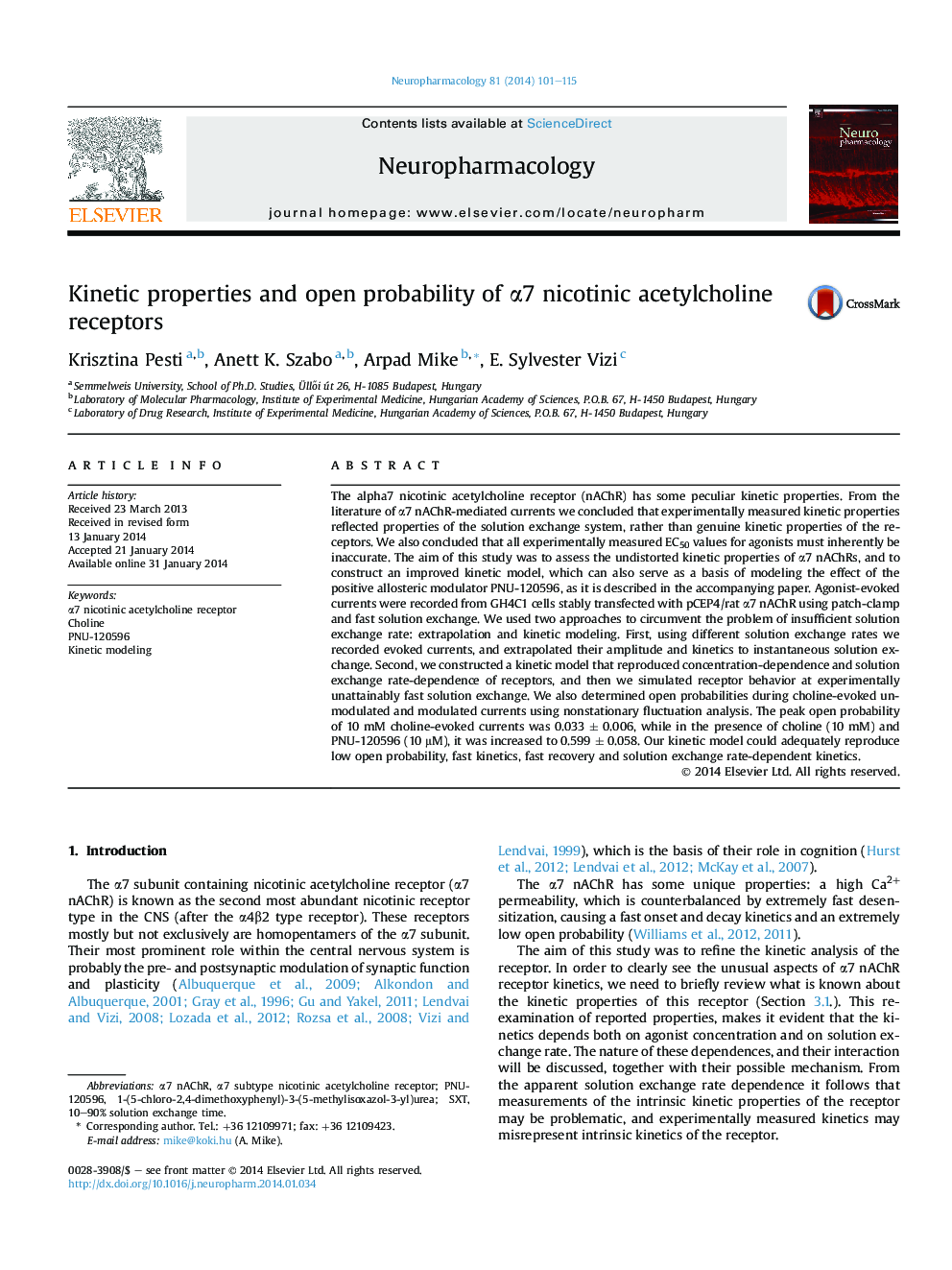| Article ID | Journal | Published Year | Pages | File Type |
|---|---|---|---|---|
| 2493236 | Neuropharmacology | 2014 | 15 Pages |
•Patch-clamp study of α7 nAChRs expressed in GH4C1 cells.•Solution exchange rate-dependence of current amplitude and kinetics.•Intrinsic kinetics of α7 nAChRs assessed by extrapolation and by kinetic modeling.•An improved kinetic model of α7 nAChRs.•Open probabilities for unmodulated and modulated α7 nAChRs.
The alpha7 nicotinic acetylcholine receptor (nAChR) has some peculiar kinetic properties. From the literature of α7 nAChR-mediated currents we concluded that experimentally measured kinetic properties reflected properties of the solution exchange system, rather than genuine kinetic properties of the receptors. We also concluded that all experimentally measured EC50 values for agonists must inherently be inaccurate. The aim of this study was to assess the undistorted kinetic properties of α7 nAChRs, and to construct an improved kinetic model, which can also serve as a basis of modeling the effect of the positive allosteric modulator PNU-120596, as it is described in the accompanying paper. Agonist-evoked currents were recorded from GH4C1 cells stably transfected with pCEP4/rat α7 nAChR using patch-clamp and fast solution exchange. We used two approaches to circumvent the problem of insufficient solution exchange rate: extrapolation and kinetic modeling. First, using different solution exchange rates we recorded evoked currents, and extrapolated their amplitude and kinetics to instantaneous solution exchange. Second, we constructed a kinetic model that reproduced concentration-dependence and solution exchange rate-dependence of receptors, and then we simulated receptor behavior at experimentally unattainably fast solution exchange. We also determined open probabilities during choline-evoked unmodulated and modulated currents using nonstationary fluctuation analysis. The peak open probability of 10 mM choline-evoked currents was 0.033 ± 0.006, while in the presence of choline (10 mM) and PNU-120596 (10 μM), it was increased to 0.599 ± 0.058. Our kinetic model could adequately reproduce low open probability, fast kinetics, fast recovery and solution exchange rate-dependent kinetics.
